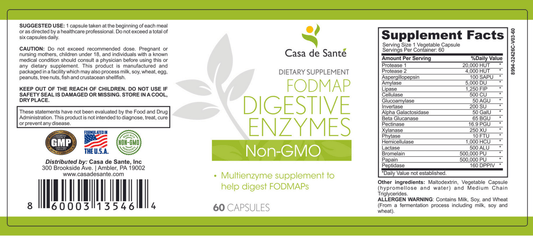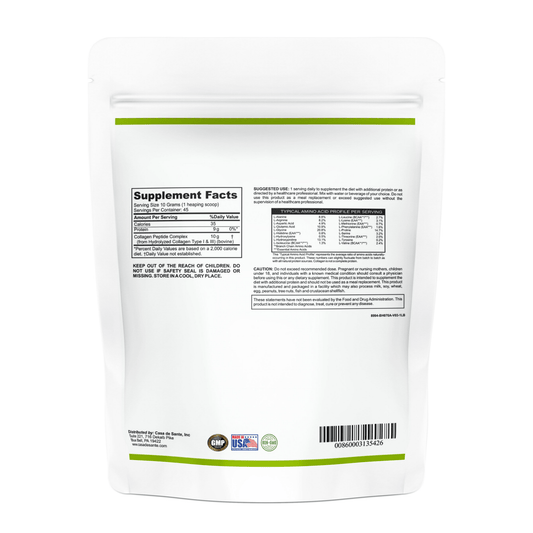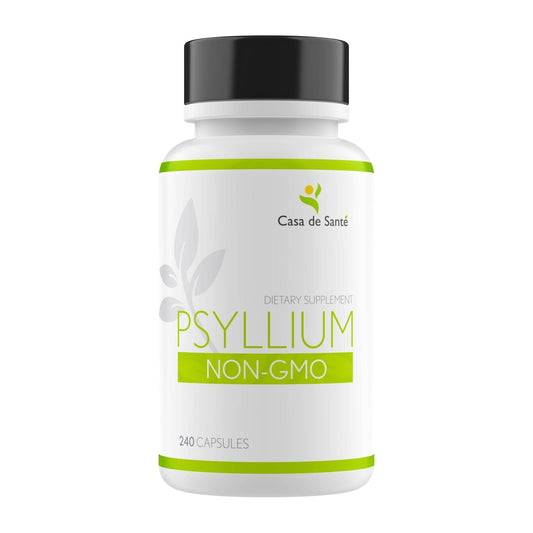Mindbody vs Mindbody
Mindbody vs Mindbody
In the realm of holistic health and wellness, the term "mindbody" has gained significant attention and popularity. However, there seems to be a debate within this field regarding the true meaning and essence of mindbody. To shed some light on this topic, this article explores the concept of mindbody, its origin, philosophy, and its impact on health and wellness. Moreover, we will delve into a comparison of different interpretations of mindbody and examine the practical applications of this concept in everyday life and professional settings.
Understanding the Mindbody Concept
The mindbody concept encompasses the belief that the mind and body are interconnected, and that both have a profound influence on a person's well-being. It suggests that mental and physical health are intricately linked, and a holistic approach to wellness acknowledges this connection. By nurturing both the mind and body, individuals can achieve a state of optimal health and vitality.
The Origin of Mindbody
The origins of the mindbody concept can be traced back to ancient traditions and systems of medicine. Ancient civilizations such as the Egyptians, Greeks, and Chinese recognized the interconnectedness of the mind and body and developed practices to promote overall well-being. These early teachings laid the foundation for the modern understanding of mindbody.
In ancient Egypt, the concept of mindbody was deeply ingrained in their culture. They believed that the mind and body were two sides of the same coin, and that maintaining harmony between the two was essential for a healthy and prosperous life. Egyptian physicians would often prescribe a combination of physical exercises, herbal remedies, and spiritual practices to treat ailments and restore balance in the mind and body.
The ancient Greeks, particularly the philosophers like Plato and Aristotle, also explored the connection between the mind and body. They believed that a balanced mind and body were essential for achieving eudaimonia, which can be translated as "flourishing" or "living well." The Greek physician Hippocrates, often referred to as the father of modern medicine, emphasized the importance of a holistic approach to health, considering both the physical and mental aspects of a person.
In ancient China, the concept of mindbody was deeply rooted in traditional Chinese medicine and philosophy. The Chinese believed in the existence of Qi, an energy that flows through the body and is responsible for maintaining health and vitality. Practices like acupuncture, tai chi, and qigong were developed to balance the mind and body, promoting overall well-being.
The Philosophy Behind Mindbody
At its core, mindbody philosophy emphasizes the idea that our thoughts, emotions, and beliefs shape our physical experience. It recognizes that our mental state can influence our physical health, and vice versa. By maintaining a positive mindset, managing stress, and cultivating a sense of balance, individuals can enhance their overall well-being.
Positive psychology, a branch of psychology that focuses on the study of human well-being and flourishing, aligns closely with the mindbody philosophy. It emphasizes the importance of cultivating positive emotions, such as gratitude, joy, and resilience, to enhance psychological well-being and promote physical health. Research has shown that individuals who practice positive psychology techniques experience lower levels of stress, improved immune function, and a higher quality of life.
In addition to positive psychology, mindbody philosophy draws inspiration from practices like mindfulness and meditation. These practices encourage individuals to be fully present in the moment, observing their thoughts and sensations without judgment. By developing a greater awareness of the mind-body connection, individuals can better understand how their thoughts and emotions impact their physical well-being.
Furthermore, mindbody philosophy recognizes the importance of self-care and self-compassion. It encourages individuals to prioritize their physical and mental well-being by engaging in activities that promote relaxation, nourishment, and rejuvenation. This may include practices like regular exercise, healthy eating, quality sleep, and engaging in hobbies or activities that bring joy and fulfillment.
In conclusion, the mindbody concept has a rich history rooted in ancient civilizations and continues to be a fundamental aspect of holistic wellness today. By understanding the interconnectedness of the mind and body, individuals can adopt practices and beliefs that promote optimal health and vitality. Embracing a mindbody approach to well-being empowers individuals to live a balanced and fulfilling life.
The Two Sides of Mindbody
The mindbody concept encompasses both the physical and mental aspects of well-being. Let's explore each aspect in more detail.
The Physical Aspect of Mindbody
From a physical perspective, mindbody recognizes the important role our bodies play in our overall health. Engaging in regular exercise, consuming a balanced diet, and getting sufficient rest are all essential for maintaining physical well-being.
Regular exercise not only helps to strengthen our muscles and improve cardiovascular health, but it also releases endorphins, which are known as "feel-good" hormones. These endorphins not only boost our mood but also reduce the perception of pain.
Consuming a balanced diet is crucial for providing our bodies with the necessary nutrients to function optimally. Including a variety of fruits, vegetables, whole grains, lean proteins, and healthy fats in our diet can help prevent chronic diseases and promote overall well-being.
Getting sufficient rest is equally important for our physical health. During sleep, our bodies repair and rejuvenate themselves. It is during this time that our immune system strengthens, our muscles grow, and our brain consolidates memories. A lack of sleep can lead to various health issues, including decreased cognitive function, weakened immune system, and increased risk of chronic conditions such as obesity and diabetes.
Additionally, mindbody practices often incorporate techniques such as yoga, tai chi, and mindful movement to improve flexibility, strength, and body awareness. These practices not only enhance physical fitness but also promote relaxation and reduce stress levels.
The Mental Aspect of Mindbody
The mental aspect of mindbody focuses on nurturing a positive mindset, managing stress, and cultivating emotional well-being.
Practices such as meditation have been used for centuries to calm the mind and promote mental clarity. By focusing on the present moment and observing our thoughts without judgment, we can reduce anxiety and improve our ability to concentrate.
Mindfulness, another important aspect of the mental aspect of mindbody, involves bringing our attention to the present moment and fully experiencing it without judgment. This practice helps us become more aware of our thoughts, emotions, and physical sensations, allowing us to better manage stress and cultivate a sense of inner peace.
Cognitive-behavioral techniques are employed to address negative thought patterns and improve overall mental health. By identifying and challenging irrational beliefs, individuals can develop healthier and more adaptive ways of thinking, leading to improved emotional well-being.
By incorporating these mental aspect practices into our daily lives, we can reduce stress levels, enhance our ability to cope with challenges, and improve our overall quality of life.
Comparing Mindbody to Mindbody
Although the term "mindbody" may seem redundant, it actually refers to different interpretations and approaches within the holistic health and wellness field. Let's explore the similarities and differences between various mindbody concepts.
When we delve into the realm of mindbody concepts, we discover a rich tapestry of ideas and practices that aim to bridge the gap between the mind and body. These concepts, despite their differences, all share a fundamental belief in the interconnectedness of the mind and body. They recognize the importance of holistic well-being and strive to promote overall health through a balanced approach.
One common thread that runs through all mindbody concepts is the acknowledgment that our mental and physical states are deeply intertwined. By understanding this connection, practitioners of mindbody techniques seek to enhance both aspects of our being, recognizing that a healthy mind contributes to a healthy body, and vice versa.
Similarities Between the Two Concepts
Despite the variations in interpretation, all mindbody concepts share a fundamental belief in the interconnectedness of the mind and body. They recognize the importance of holistic well-being and strive to promote overall health through a balanced approach.
Furthermore, these mindbody concepts often incorporate practices such as meditation, yoga, tai chi, and other mindful movement modalities. These practices aim to cultivate awareness, reduce stress, and foster a sense of inner peace. By engaging in these activities, individuals can tap into the power of their mind and body connection, experiencing a profound sense of well-being.
Moreover, mindbody concepts emphasize the importance of self-care and self-compassion. They encourage individuals to listen to their bodies, honor their emotions, and nurture their mental and physical health. By cultivating a compassionate relationship with oneself, practitioners of mindbody techniques can create a solid foundation for overall well-being.
Differences and Contradictions
While all mindbody concepts advocate for the integration of mind and body, there can be contrasting views on specific practices and techniques. Some approaches prioritize the mental aspect of mindbody, while others may place more emphasis on physical practices. These differences stem from varying philosophical perspectives and individual interpretations within the holistic health and wellness community.
For instance, some mindbody concepts may focus primarily on the power of positive thinking and affirmations. These approaches highlight the role of the mind in shaping our reality and believe that by cultivating positive thoughts, we can manifest positive outcomes in our lives. On the other hand, other mindbody concepts may emphasize the importance of physical movement and body-based practices, such as yoga or dance, as a means to access and transform our mental and emotional states.
Additionally, within the realm of mindbody concepts, there may be contradictions and debates regarding the effectiveness and validity of certain practices. Some practitioners may advocate for the use of alternative therapies, such as acupuncture or energy healing, while others may take a more scientific approach, relying on evidence-based practices and interventions.
It is important to note that these differences and contradictions within mindbody concepts are not necessarily a sign of disagreement or conflict. Rather, they reflect the diverse perspectives and approaches that exist within the holistic health and wellness field. Each interpretation and technique offers a unique pathway towards achieving mind-body harmony and overall well-being.
The Impact of Mindbody on Health and Wellness
The mindbody concept has had a profound impact on the way we approach health and wellness. Let's examine how mindbody practices influence physical and mental well-being.
The Role of Mindbody in Physical Health
By focusing on both the mind and body, mindbody practices contribute to improved physical health. Regular exercise and mindful movement not only enhance physical fitness but also promote flexibility and body awareness. Moreover, by incorporating stress management techniques, mindbody practices help reduce the negative impact of chronic stress on the body, leading to better overall health.
The Influence of Mindbody on Mental Health
Mindbody practices play a crucial role in supporting mental health and emotional well-being. Techniques such as meditation and mindfulness have been shown to reduce symptoms of anxiety and depression, improve mental clarity and focus, and promote overall emotional balance. By addressing the psychological aspects of well-being, mindbody practices offer a holistic approach to mental health.
Practical Applications of Mindbody
Now that we have explored the concept of mindbody and its impact on health and wellness, let's examine practical ways to incorporate these principles into everyday life and professional settings.
Mindbody in Everyday Life
Incorporating mindbody practices into everyday life can be as simple as taking a few moments each day for meditation or mindfulness exercises. Engaging in regular physical activity, such as yoga or tai chi, can also help foster a sense of balance and well-being. Additionally, practicing self-care and seeking opportunities for relaxation and rejuvenation are essential for maintaining a mindbody connection outside of specific wellness practices.
Mindbody in Professional Settings
Mindbody principles can also be applied in professional settings to enhance wellness and productivity. Employers can offer mindfulness workshops or provide designated spaces for employees to engage in relaxation techniques. Encouraging breaks for physical activity and promoting open communication about mental health can contribute to a supportive work environment that recognizes the importance of holistic well-being. By integrating mindbody practices into the workplace, individuals can experience improved job satisfaction and enhanced overall wellness.
In conclusion, the mindbody concept represents an approach to health and wellness that recognizes the interconnectedness of the mind and body. By nurturing both aspects, individuals can achieve optimal well-being. Understanding the origin, philosophy, and impact of mindbody allows us to make informed choices about incorporating these practices into our lives. Whether in everyday life or professional settings, the benefits of mindbody can have a profound impact on our health, ultimately leading to a more balanced and fulfilling life.




























